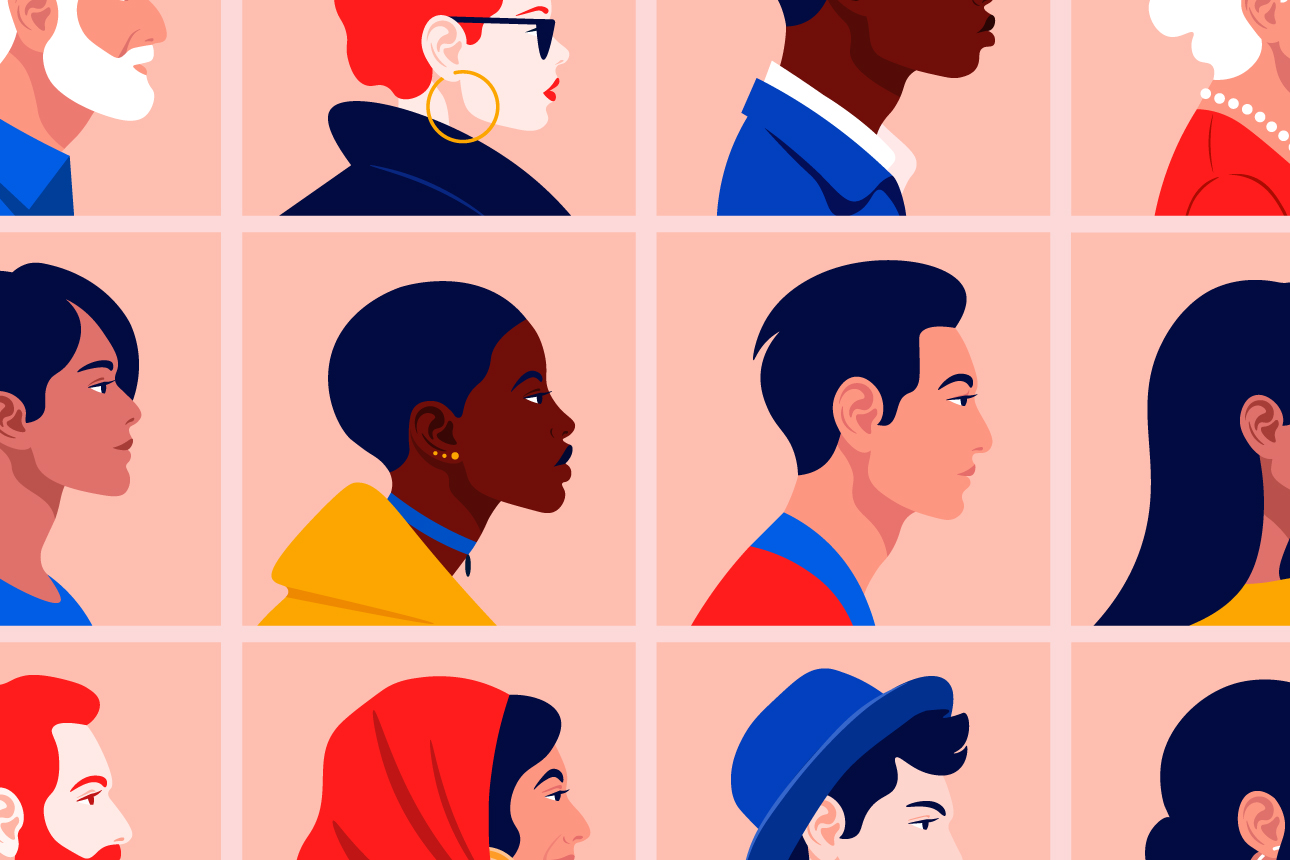Confronting the Uncomfortable Reality of Workplace Discrimination
The U.S. is finally addressing racism in law enforcement. While we’re at it, let’s tackle workplace discrimination as well.
Topics

Widespread protests have filled the streets in every U.S. state and around the world almost daily since George Floyd’s murder at the hands of Minneapolis police late in May. As the Black Lives Matter movement reminds us — and as the murders of Floyd, Rayshard Brooks, Breonna Taylor, and too many others have made painfully obvious — Black people often experience a harsher standard of treatment at the hands of the police than White people do. The sheer number and variety of people now speaking out on social media against discrimination and police brutality, and organizing and attending diverse protests worldwide, suggest that the push toward greater accountability and racial equality in law enforcement is gaining momentum. We could not be happier about this development — but we can’t stop there.
Our research involves a different form of racial discrimination, one that directly affects almost every facet of Black American lives. Workplace discrimination — employers’ tendency to value White employees over Black employees — has had devastating consequences for generations of Black Americans. We know some of the solutions, but we need the social will to implement them.
The list of discriminatory workplace practices is long and backed by research. Applicants with White-sounding names are more likely to receive calls back from potential employers than those with Black-sounding names.1 Studies have shown that darker-skinned applicants face distinctive disadvantages when applying for jobs compared with lighter-skinned applicants.2 One study even found that a White applicant with a criminal record received more interest from employers than a Black applicant with no record — an injustice compounded by the racial discrimination of law enforcement, which has increased the likelihood that Black Americans will have a criminal record.3
Systemic discrimination doesn’t stop once someone has landed a job. Racial bias affects negotiations over starting pay, future wages, and upward mobility. In short, Black employees start off making less money than their White colleagues, a disparity that compounds over time. Black employees also receive promotions less often.4
A third significant blow comes when economic times are tough, as they are now. Many Black Americans believe they are the “last hired and first fired,” and it appears that there is some truth to that. Across industries and job levels, Black employees are more likely than White employees to be laid off or fired, particularly in times of transition and economic uncertainty.5 That’s true even after accounting for any other factors — such as experience or education levels — that might provide an alternative explanation.
Employment discrimination and racism, combined with the COVID-19 pandemic, have proved absolutely disastrous for Black Americans. More unemployment, less health care coverage, overrepresentation in public-facing “essential” jobs, and underrepresentation in jobs that can be performed remotely have left many Black Americans in the crosshairs of the virus, both economically and physically. Indeed, Black Americans are nearly 2.5 times as likely as their White counterparts to die from COVID-19.
None of this should detract from the essential work of addressing racial disparities in law enforcement, but let’s not limit the power of this movement to criminal justice. To reach the full potential of the current movement, we must fight systemic racism in all facets of life, including employment. To combat workplace discrimination, we encourage employers to apply the following strategies:
- Think long term. Much of the racism we are seeing is structural, having been built into institutions for decades, so it is unlikely to be remediated altogether in a matter of months. To make substantive, long-lasting changes, senior-level executives should deliberately define not only diversity but also inclusion as elements of their organizations’ strategic- and succession-planning processes. Consciously working to develop inclusive systems can help catalyze a positive trickle-down effect.6
- Start playing detective. Like police brutality, racial discrimination is against the law. However, there is unlikely to be video evidence to prove that it has occurred, particularly when it’s not explicit. Organizations need to conduct diversity audits, looking at human resource data for signs of racism. For example, examining personnel data by race for systemic differences can surface discriminatory practices, such as in performance management — Black employees being rewarded less generously for good performance, perhaps, or reprimanded more harshly for counterproductive work behavior like tardiness than White colleagues who exhibit similar behavior.7 Additionally, look for signs of workplace segregation by job types and levels within the company, which may stymie the promotion of Black employees to the upper ranks. HR personnel can examine such data and include it in periodic internal reports. In addition, senior executives can collaborate with HR in carefully reviewing and comparing data on performance, compensation, and other financial rewards to discern internal racial inequities.
- Look for both intentional and unintentional discrimination. Discrimination can be intentional (disparate treatment) or unintentional (disparate impact), and it is important to address both aspects of it. Good intentions may be enough to reduce intentional discrimination, but they won’t stop unintentional bias. For instance, companies often place hurdles in the hiring process, looking for qualities or qualifications that aren’t truly needed to perform the job, which can skew the hiring selection in favor of some groups. Unintentional discrimination also can occur in interpersonal interactions, such as in extending (or neglecting to extend) invitations to participate in networking opportunities or events where important decisions are made, and in overlooking or discrediting the contributions of Black employees.8 Unintentional discrimination is often subtle, yet its consequences can be as harmful to its targets, and in some cases more so, than intentional discrimination.9
- Hold everyone accountable. Systems of accountability are critical to limiting the impact of individual biases. When people know someone is watching, discrimination often declines. Surveys, focus groups, and affinity groups can provide valuable information about an organization’s climate and the degree to which it is inclusive of all employees. The information gleaned from these tools can be used to assess organizational progress. Many large companies, in fact, now tie executive compensation to the achievement of organizational diversity goals.
Additionally, establishing and enforcing consequences for violations sends a clear message about accountability and signals that racial bias will not be tolerated. Front-line managers can be a first line of defense by conducting regular check-ins with employees to monitor whether the work environment is free from discrimination (both intentional and unintentional) and help ensure that it is by enforcing zero-tolerance or progressive discipline policies. Individual employees can also hold one another accountable by recognizing and speaking up against racial bias when they see it. Research shows that confronting individuals about racial bias can reduce such behavior.10 The effects of witnessing racial bias have been compared to exposure to secondhand smoke, with repercussions for bystanders as well as targets, making such confrontations helpful not only for the targets of bias but also for their colleagues.11
Racial discrimination in the workplace, racial bias in police brutality, and racial inequality in the outcomes of the COVID-19 pandemic are not isolated phenomena. The interconnected devaluation of Black lives (relative to White ones) extends across settings; the systemic racism that makes Black Americans more susceptible to police brutality also perpetuates continued racial inequalities across the employment life cycle. As the movement for greater racial equality grows and we continue to fight systemic racism in policing, we must also tackle racial discrimination in other important contexts, including education, health care, housing, finance, and, of course, the workplace. To be clear, the actions outlined above alone won’t solve the problem of workplace discrimination, but they could move us a step closer to the lofty ideals of equal opportunity espoused by America’s founders and promised by the Civil Rights Act of 1964.
Editor’s Note: An adapted version of this article appears in the Fall 2020 print edition.
References (11)
1. M. Bertrand and S. Mullainathan, “Are Emily and Greg More Employable Than Lakisha and Jamal? A Field Experiment on Labor Market Discrimination,” The American Economic Review 94, no. 4 (September 2004): 991-1013.
2. M.S. Harrison and K.M. Thomas, “The Hidden Prejudice in Selection: A Research Investigation on Skin Color Bias,” Journal of Applied Social Psychology 39, no. 1 (January 2009): 134-168.









Comments (3)
Brittany Granberry
Shirley Engelmeier
Anonymous